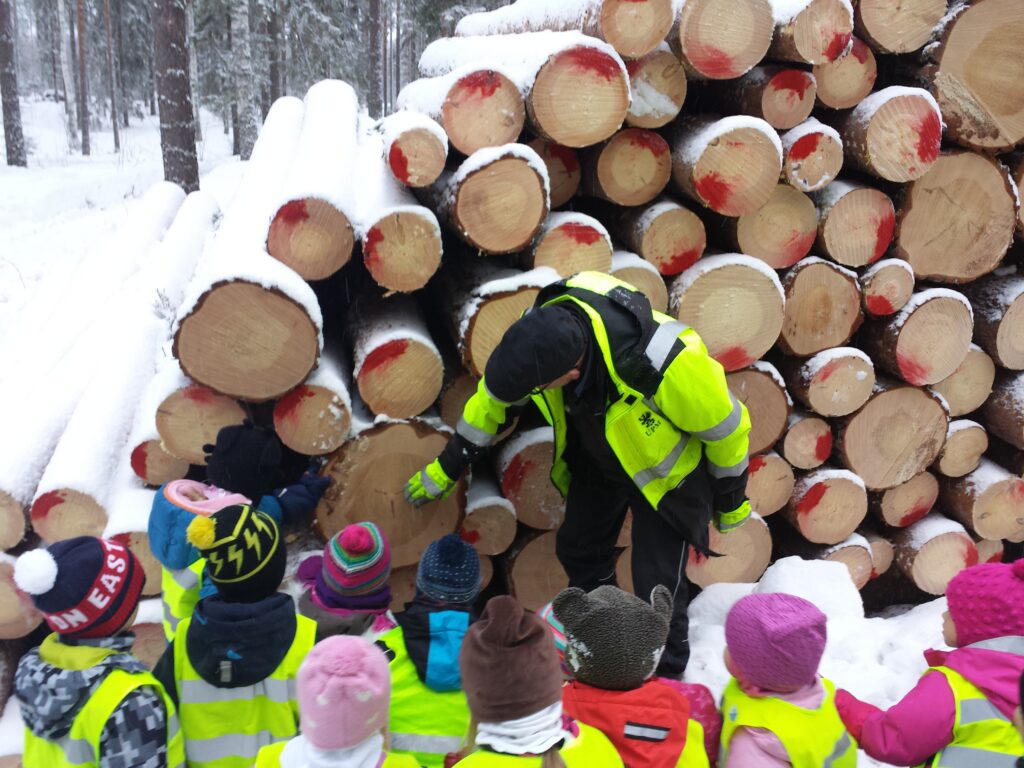Forest teaches how to teach

New curricula will change the learning models in the Finnish comprehensive school from the autumn of 2016. At the University of Eastern Finland, forests are used to educate future teachers in learning across subject boundaries.
Municipalities and schools around the country are currently preparing new curricula that will be taken into use in autumn 2016. The curricula define how teaching will be arranged in each school and municipality.
The reform will not be just cosmetics. The work started in 2012 and the National Core Curriculum was finalized late last year. The reform affects approximately 38,000 teachers and more than 540,000 pupils in the comprehensive school.
“In contrast to the traditional subject boundaries, the new curricula emphasize larger entities that can be implemented by using investigative learning,” says Mr. Petteri Vanninen, project coordinator at the Savonlinna campus of the University of Eastern Finland. The Savonlinna campus educates teachers for kindergartens and primary schools.
“The forest environment provides a wide range of possibilities. Forestry experts can communicate their latest knowledge about the ecological, economic and social importance of forests to future teachers,” says Vanninen. Lusto – the Finnish Forest Museum – the Natural Resources Institute, the Finnish Forest Centre as well as teh state-owned forestry company Metsähallitus are organizations that develop the teaching methods together with the university.
New model stresses skills required by the labour market

The new curricula will change the principles of teaching. In the future, the core idea stressed will be the joy of learning which – in turn – is needed to achieve results. In addition, communication skills and learning to follow a sustainable way of life will receive more emphasis.
Vanninen says that creativity and innovation, critical thinking, problem solving, joint brainstorming, networking, and the ability to take advantage of digital technology form the foundation for other skills.
Education should therefore activate pupils to independent study and discovery. At the same time, the pupils’ abilities to solve emerging issues and to find solutions through digital or personal networks will improve.
Forest teaches history of Finland
Vanninen’s colleague Mr. Ismo Pellikka, Senior Lecturer in religious and history education and ethics, says that forests have a great impact on his work. He educates future kindergarten and primary school teachers on didactics.
“Our study period ‘Teaching of history’ includes the topic ‘Forests as a historical archive’. We study how the forest helps primary-school children to understand Finland’s past,” Pellikka says.
As the best example on how to involve forests in the new learning methods, Pellikka quotes the case of the Laukansaari croft. “We found the ruins of a croft from the 18th century with our students. That made us investigate life in those days, 300 years ago,” Pellikka says.
The students created a fictional, yet historically possible family and described the family’s everyday life throughout the year: what the family ate, how they celebrated, and which songs were sung for the child in the cradle. At the same time, the students came to realize the importance of forest. The family found their food, raw materials, everything they needed in the forest next to their home.
Pellikka enjoyed the students’ enthusiasm to learn and to gain new insights on the basis of their own independent work. ”The most gratifying thing is how they get excited and rediscover the past with the help of modern technology,” Pellikka describes.
The reform will take years

A similar enthusiasm should also spread to the pupils in the comprehensive schools. Pellikka underlines that the transition to a new kind of learning will take decades.
“We will not revolutionize the teaching of history, but this is a realistic alternative to the model that many of us have found non-motivating,” Pellikka says, referring to traditional teaching where students listen to their teacher and copy his or her notes in their own notebooks.
Even Pellikka’s own courses at the university indicate that the adoption of new conceptions will not take place overnight. The new learning methods do not inspire everyone. The students can opt for studying the same courses in the traditional manner, and only a quarter of them attend the new pilot implementations.
“The new method requires independent work, self-discipline and scheduling with the rest of the group. We work intensively with one topic for a brief period, and the deadlines cause pressure. However, this is what also happens in working life. This is a rehearsal for it,” Pellikka says.
Dissemination of information encourages students
Vanninen and Pellikka stress that the use of new technologies and co-operation with experts motivate pupils.
Pellikka says that the products from forest-related courses will be saved in the Openmetsä/OpenForest portal developed at the Savonlinna campus. It gathers forest-related educational materials together in one place. “This gives everyone the chance to use our work in studying history.”
The portal can include different sorts of forest-related material: text, video, audio, still images, on their own or in different combinations. The site is an open GIS application which shows the study locations on a map, even on mobile devices.
“Via the portal, teachers and students can also use the bona fide research data of the Natural Resources Institute and utilize it in their own studies and draw conclusions from it,” Vanninen explains.
During the past two years, over 700,000 visitors have used the OpenForest portal. It has more than 260 contributors, including teachers, education researchers, personnel of the Natural Resources Centre, Metsähallitus, the Forestry Centre and Lusto, as well as future teachers.
Previously in forest.fi: You can teach anything using forests
Kirjoita kommentti